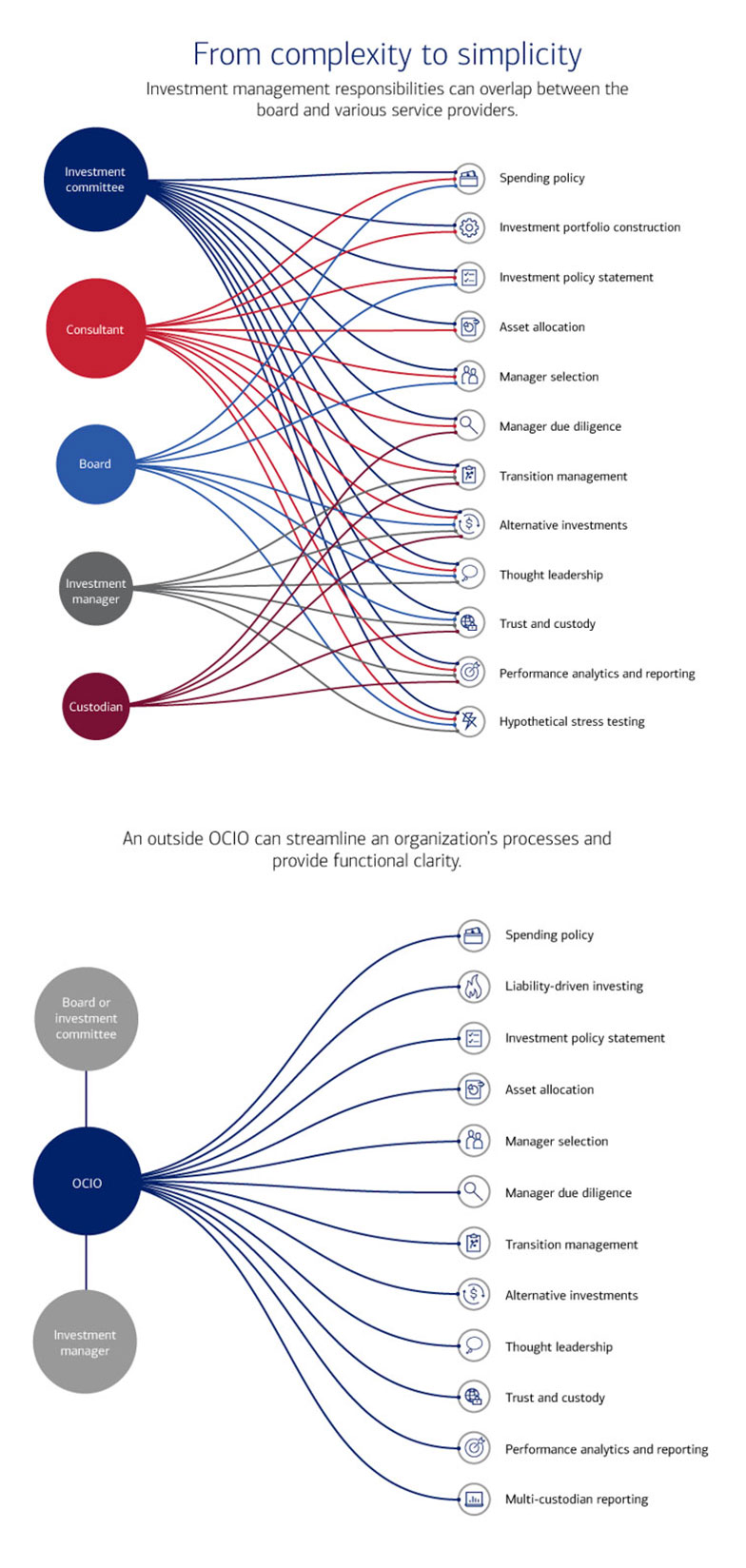The exact role of an OCIO can vary according to the organization’s needs. Working with the investment committee and staff, an OCIO might help develop an investment policy statement, set target asset allocations, select managers, execute trades, rebalance portfolios and create performance reports.
Some nonprofits choose to delegate only limited responsibilities — at least initially. Instead of having full discretion over investment decisions, for example, the OCIO might be allowed to hire and dismiss investment managers for a portion of the organization’s portfolio, such as overseeing specialized investments that the investment committee and board consider too complex for them to handle. “As time goes on, the board may acquire more confidence in the relationship and extend more discretion to the OCIO,” Jarvis says.
From outsourcing to a strategic partnership
As more nonprofits have shifted to an OCIO arrangement, some have begun to explore the ways in which an OCIO might help an organization address broader issues and take on some responsibilities that normally fall to the board. In this model, sometimes referred to as “OCIO 2.0,” rather than simply looking at a nonprofit’s investments, the outside team might help develop strategic goals and a plan for achieving them.
“When we sit down with a new client, our first questions are aimed at discerning what that nonprofit’s mission is and what obstacles there may be,” Jarvis says. “What’s your strategic plan, and does it need to be adjusted?” External events may have an outsized impact, he adds. The onset of the pandemic, for example, affected both mission and operations for many organizations. “Anybody who had a strategic plan in March 2020 needs a new plan,” he notes.
In addition to strategic planning, the OCIO 2.0 model can also help the board look at its governance and risk policies, optimize cash flow, develop plans for leadership development and succession, facilitate board retreats and assess fundraising. In addition, an OCIO might help board members think about more efficient ways of spending their time. “The experienced professionals in our National Consulting and Advisory Practice (NCAP) can provide checklists that a board can use for self-assessment,” says Jarvis, “then present the results and facilitate a discussion.” A high degree of strategic and operational integration between the organization and an OCIO, including resources such as NCAP, can lead to an ongoing collaboration.
Developing a deeper relationship
Hiring an OCIO doesn’t take away the board’s fiduciary obligations. But the financial firm that assumes the position can act as a co-fiduciary as it manages investments and takes on additional financial responsibilities. Organizations such as Bank of America - which is held to the trust fiduciary standard, the strictest in the financial industry - can supplement investment offerings with strategic consulting and administrative support.
Rather than provide standardized services, an OCIO 2.0 partner should deliver precisely the kind of assistance an organization needs. “At Bank of America, we are what I like to call radical customizers,” Jarvis says. “We work with nonprofits on a continuing basis, and our team isn’t there just to complete an assignment.” As an organization continues to evolve, so will the shape and scope of the OCIO relationship. “This OCIO 2.0 model goes beyond simple investing, to an understanding of the business model of the nonprofit itself,” Jarvis says.
To learn more about what an OCIO might do for your organization, contact your advisor for a copy of our whitepaper, “OCIO 2.0: Strategic Investment Outsourcing for Nonprofit Organizations.”



